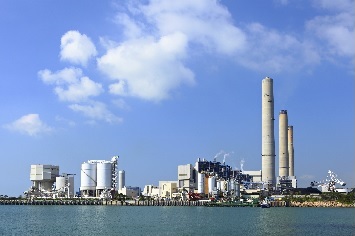On December 5, 2016, the American Water Works Association and the National Association of Water Companies (AWWA/NAWC) filed suit in the U.S. Court of Appeals for the 5th Circuit, asking the court to order the EPA to reopen its Effluent Limitations Guidelines and Standards for the Steam Electric Power Generating Point Source Category (ELGs, November 3, 2015, FR).
 |
According to the AWWA/NAWC, the rule is arbitrary and capricious because the Agency failed to require binding, enforceable controls to address bromide discharges from the source category even though, throughout the rule, the EPA acknowledges that exposure to bromide increases the risk of cancer, that discharged wastewater from electric power plants contains bromide, and that the discharged bromide creates exceedances of existing Safe Drinking Water Act maximum contaminant levels at downstream drinking water systems. The petitioners also note that bromide discharges cause elevated levels of harmful disinfection by-products in finished drinking water.
The petitioners specifically request that the 5th Circuit remand the rule without vacatur and order the Agency to fully consider more protective controls of bromide discharges.
Bromide Results from Desulfurization
According to the AWWA/NAWC, in recent years, fossil-fuel electric power plants have installed effective air pollution control technologies. However, one effect of these controls is that captured air pollutants are transferred to wastewater. “Recent studies have shown that steam electric power plants that have installed a particular technology—flue gas desulphurization [sic] (FGD)—to control air emissions have created increased levels of bromide discharges to surface waters,” state the petitioners.
Cost Over Health
In the preamble to the final ELGs, the EPA acknowledges that existing technologies are capable of removing bromide from the wastewater discharges. For example, the Agency found that vapor-compression evaporation was effective in removing a number of recalcitrant pollutants, including boron and sodium, as well as bromides. The AWWA/NAWC note that this option would have alleviated the impacts on downstream water plants and addressed the bromide problem at its source while putting the costs for addressing the problem on the power utilities instead of the water utilities. However, the EPA rejected this option because of the high costs of possible regulatory requirements based on evaporation for discharges of FGD wastewater at existing facilities. Accordingly, the EPA called for a voluntary incentives program to address bromide releases. Effectively, the petitioners assert, the Agency “prioritized costs over public health.”
Remand Without Vacatur
“The Court should set aside EPA’s decision as it relates to the control of bromide discharges and order the Agency to reconsider the issue,” state the AWWA/NAWC in their brief. “The proper remedy here where EPA has failed to adequately address one aspect of a rulemaking is to remand without vacatur. When a Court invalidates an environmental regulation because it is under-protective, but vacating the regulation would result in less protection, then the Court should leave the regulation in place on remand.”
The AWWA/NAWC brief is here.
